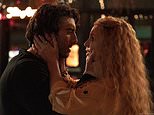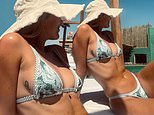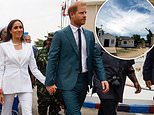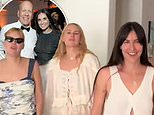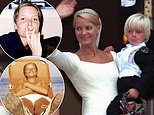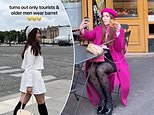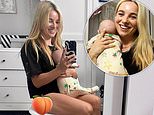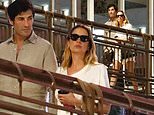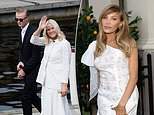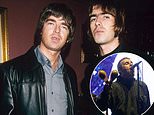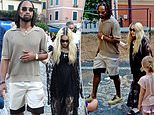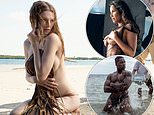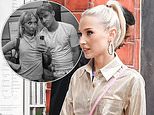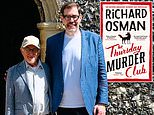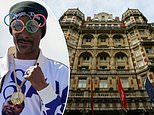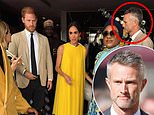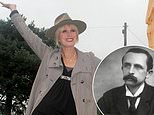EXCLUSIVEWallis Simpson 'was behind' £17m jewel robbery: The explosive clues that link Duchess of Windsor to the theft of her own jewellery are revealed in book
Geneva, no stranger to the super-rich, had never seen anything like it. Touted as the greatest auction of the 20th century, many of the world's wealthiest and most glamorous people had gathered in a vast circus tent in the grounds of the Beau Rivage Hotel for a chance to bid on the Duchess of Windsor's fabulous jewellery collection.
The best restaurants and hotels were full. Caviar, truffles and foie gras were in short supply. The great champagne houses were releasing restricted vintages at ridiculous prices to make a killing.
Crammed into the tent, on the shores of Lake Geneva, were 1,500 guests. Another 700 watched on closed-circuit TV in the ballroom. Plain-clothes detectives, in rented dinner jackets and ballgowns, tried to blend in.
Sotheby's, the venerable English auction house, was offering 306 lots to the highest bidders, including the Duchess's favourite flamingo brooch – the bird's plumes set with emeralds, rubies and sapphires – and her huge, Mughal emerald engagement ring.
This was a chance not just to possess a brilliant-cut diamond bracelet or emerald-studded earrings, but to buy a slice of history – a piece of the greatest, most scandalous and enduring love affair of modern times.
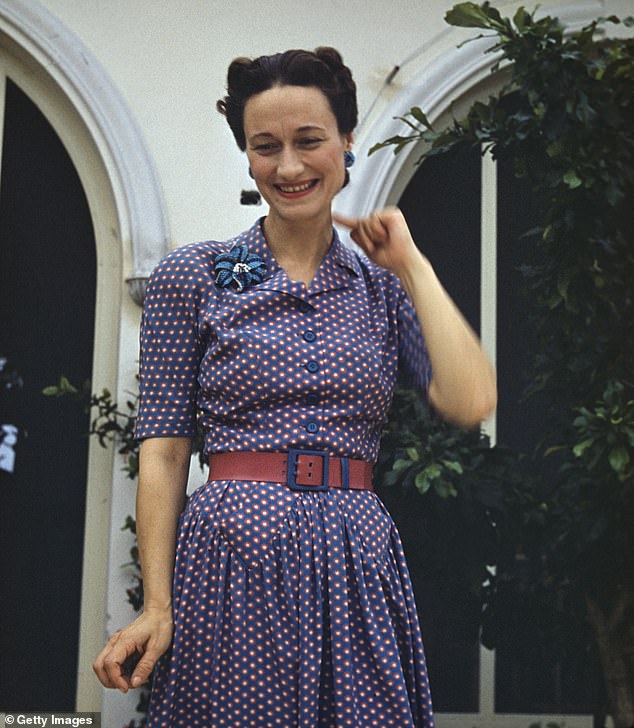
The Duchess of Windsor had a fabulous jewellery collection
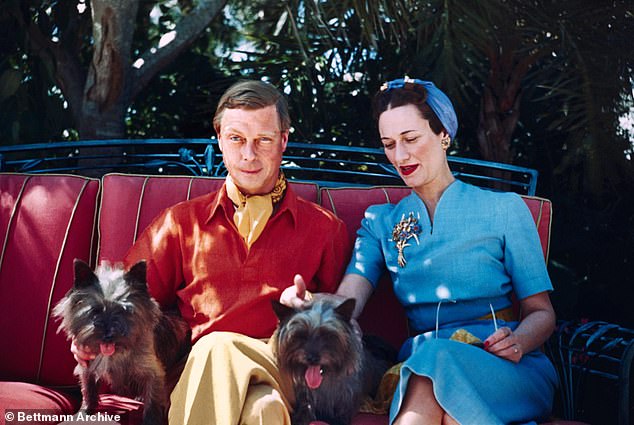
King Edward VIII's infatuation with Wallis Simpson, an American divorcee, was so all-consuming he had given up the throne for her in 1936
King Edward VIII's infatuation with Wallis Simpson, an American divorcee, was so all-consuming he had given up the throne for her in 1936. Both before their marriage and during their years of exile he had showered her with jewellery, including a birthday gift of a Burmese ruby and diamond necklace (which would fetch £2million). Many pieces were inscribed with pet names or little love notes.
The sale caused a sensation. When the collection was shown in Manhattan, the crowds were such that the police had to be called. It was estimated Sotheby's made £600,000 even before Nicholas Rayner, the auction house's jewellery expert, raised his gavel.
What was Rayner, a suave Old Etonian, thinking that day in April 1987 as he threaded his way through the crowd and bounded up the steps of the auctioneer's rostrum?
It was the biggest day of his professional life. But he would know, of course, that the back story to the Duchess of Windsor's jewellery collection wasn't at all as romantic as many of the bidders fondly imagined. Rather, it was a messy, murky business, beset by rumours of theft, deceit and underhand dealing – and a mysterious burglary that looked very much like an inside job.
Perhaps the fact that the pieces concerned had been in the Duchess's possession at the time of her death was enough to qualify them as truly hers as far as Sotheby's was concerned – but unanswered questions remain, even today.
Edward, the eldest son of George V, first met Wallis Simpson, then 35, at a party given by his then mistress, Thelma, Viscountess Furness, in 1931.
Their affair raised eyebrows in high society and hackles within the Royal Family. Edward's mother, Queen Mary, soon became alarmed by stories about the glittering Mrs Simpson, who 'dripped in new jewels and clothes'.
Mrs Simpson certainly did like her jewellery: once asked how she selected which pieces to wear, she replied brusquely: 'A fool would know that with tweeds or other daytime clothes one wears gold and with evening clothes one wears platinum.'
Queen Mary was assured by her son's circle that the jewels were paste. But her instinct proved correct.
When George V fell ill, and suspecting her wayward son might soon be King, she was horrified to discover that Edward had gifted the American woman £50,000 worth of jewels at Christmas and a further £60,000 worth a week later to celebrate the New Year – those figures would be £2.9million and £3.5million today.
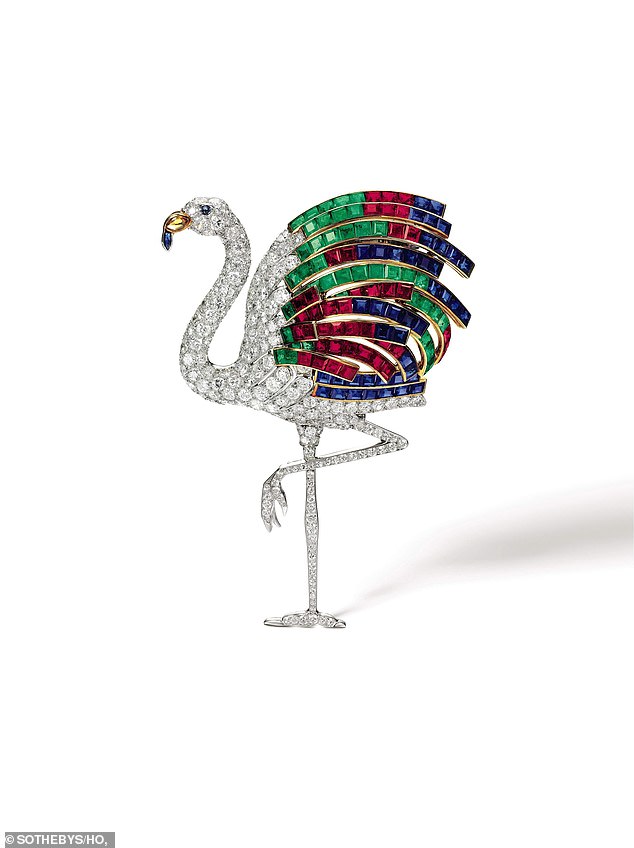
The Duchess’s favourite piece, a flamingo clip mounted by Cartier, set with rubies, emeralds and diamonds
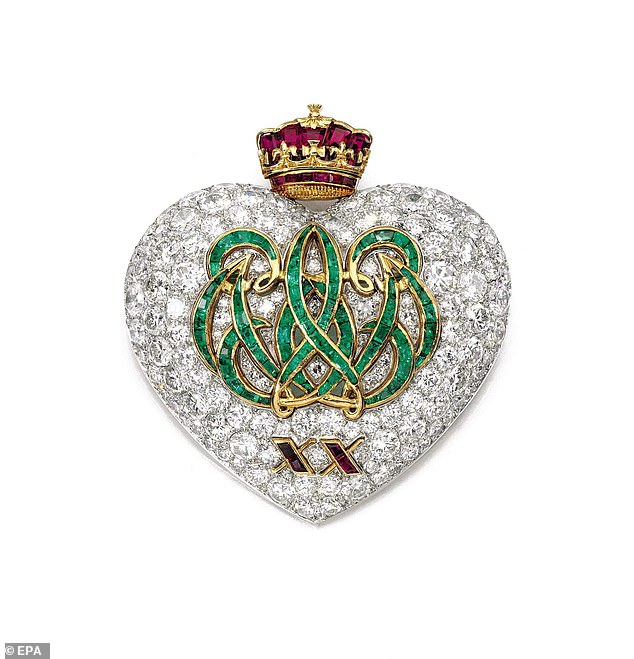
Brooch bearing the initials W and E, made for the couple’s 20th anniversary
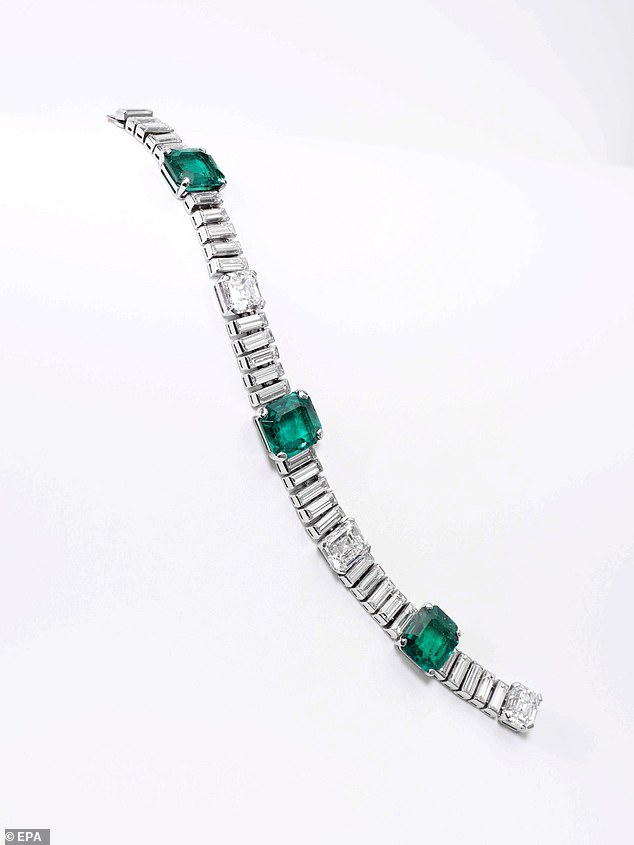
French made emerald and diamond bracelet from 1935
If Edward had wanted to keep Mrs Simpson as his mistress, that might have been acceptable. But he was determined to marry her. She sought a divorce from businessman Ernest Simpson, her second husband.
In January 1936, what had been a cause for disapproval turned into a crisis when George V died. Wallis obtained her decree nisi in October of that year and Edward made it clear his plan had not changed – he wanted her to be his wife, even in the face of staunch opposition from the British establishment. Divorcees were not allowed to remarry in church and Edward was now head of the Church of England.
His marriage to Mrs Simpson could not – would not – be sanctioned by senior clergy.
Prime Minister Stanley Baldwin warned the King that the British public would not accept the prospect of a twice-divorced American woman as their Queen. Edward could not be dissuaded, saying he was prepared to abdicate if the government continued to oppose his marriage.
Under mounting pressure to give up the relationship, Edward tried to argue for morganatic marriage (marriage between people of unequal social rank), in which he could still be King but she would be merely his consort. But this idea was vetoed by the Cabinet Office.
Eleven months after the death of his father, Edward abdicated, telling the nation that he could not carry out his kingly duties 'without the help and support of the woman I love'.
He was exiled from Britain as part of the abdication agreement. He would be known as the Duke of Windsor and only allowed to return with the permission of the monarch – his brother, now George VI and later, his niece, Elizabeth II. He and Wallis settled in Paris.
He did not leave empty-handed. Furious at having been left palaces but no cash in his father's will (the King assumed the income from the Duchy of Cornwall would be sufficient) there were lengthy negotiations as to his upkeep.
Rumour had it that in addition to the deal he struck, Edward left for life in exile with a hessian bag in his pocket, filled with uncut emeralds, sapphires and loose diamonds purloined from the royal vaults at Windsor.
Certainly, the new Duke and Duchess's French home was stacked with treasures from royal palaces that Edward had stashed away: Dunhill cigarette boxes, crystal glassware, Cartier clocks, Aubusson carpets, Hermes photo frames and the finest linens.
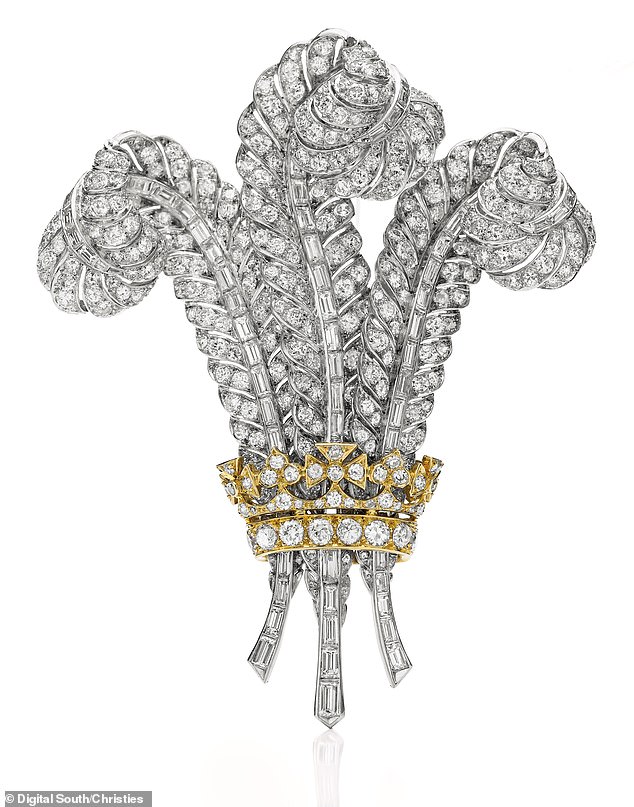
The Prince of Wales brooch, with three feathers and a gold crown made of diamonds set in platinum, bought by Liz Taylor for £490,000
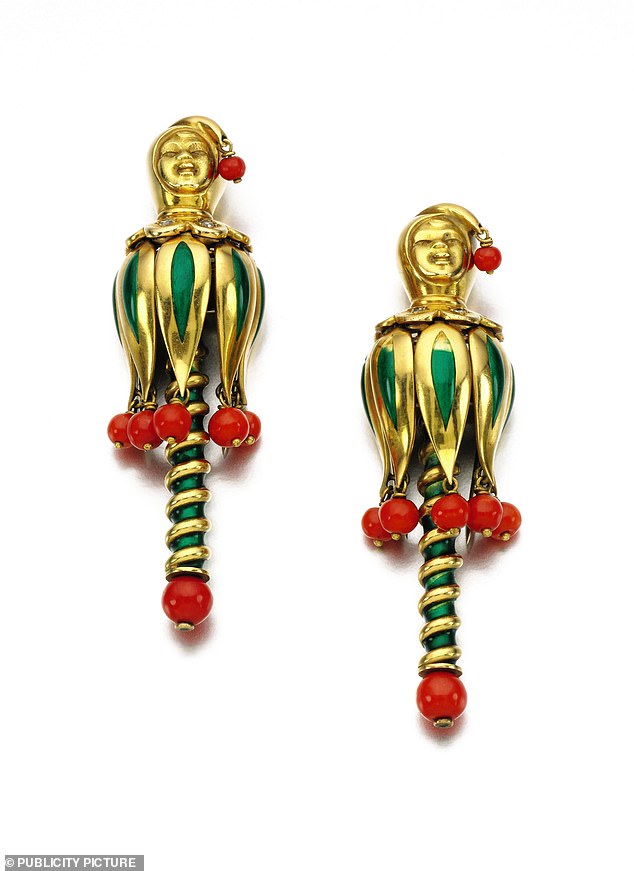
Clips by Van Cleef & Arpels
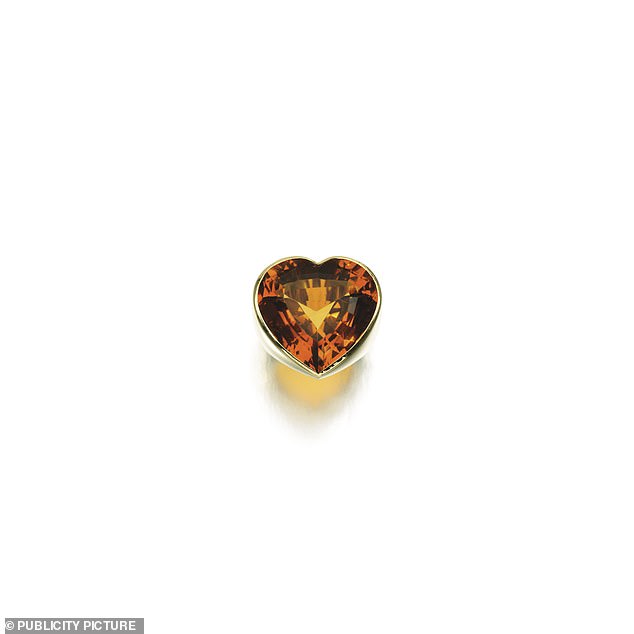
Belperron citrine ring
Both Cartier and Van Cleef & Arpels lent the Duchess jewellery to wear to public events in the 1950s, in exchange for the name of the jewellery house being leaked to the press. A former servant later said: 'Rarely was anything handed back.'
If Edward had helped himself to gemstones from the royal vaults, there were plenty to choose from, thanks to the insane generosity of the colonies of the former British empire.
On just one trip to India in 1875, Queen Victoria's son Albert was given so many gifts that a ship had to be commissioned to bring home the loot. Some made its way into the Royal Collection – but most disappeared into the family strongroom at Osborne House on the Isle of Wight.
Among the gifts were a ten-piece gold dinner service, a large double bedstead of solid silver with a canopy and a massive gold crown hung with limpid emerald drops.
But three weighty trunks of uncut gems represented the main treasure of the tour.
James Allingham, in his book Five Months With The Prince In India, wrote that diamonds 'seem to be as plentiful in India as blackberries in England'.
Suzy Menkes, in The Royal Jewels, attempted an inventory, drawing on contemporary accounts. She reckoned the haul included a diamond necklace with two large emerald pendants, a pair of diamond bracelets, a pearl necklace with emeralds, a necklace of 14 large diamonds set off by emeralds, pearls and ruby drops, a crown made of diamonds and pearls with emerald drops and a ruby necklace – among many others.
According to Menkes, these major Indian jewels have never been worn in public by any monarch or consort as they were originally presented. Most likely, they were prised out of their ethnic settings and reset – or stored in one of the Windsors' many strongrooms.
Remarkably, there has been no audit of an English monarch's personal possessions, or indeed those designated crown possessions, since Henry VIII, in 1547. Royal wills are sealed, so it is impossible to know what is passed down.
In the wake of the Russian Revolution, Queen Mary snapped up three Faberge eggs for a song. When the King's aunt, Maria Feodorovna, died in 1928, the contents of her jewel box were sent to Windsor. 'Some lovely things,' the King wrote in his diary.
An aide gave a more detailed description: 'Ropes of the most wonderful pearls were taken out, all graduated, the largest being the size of a big cherry. Cabochon emeralds and large rubies and sapphires were laid out.'
So the vaults were overflowing with diamonds, rubies, sapphires, emeralds, pearls, platinum, gold and silver by the time Wallis Simpson came along.
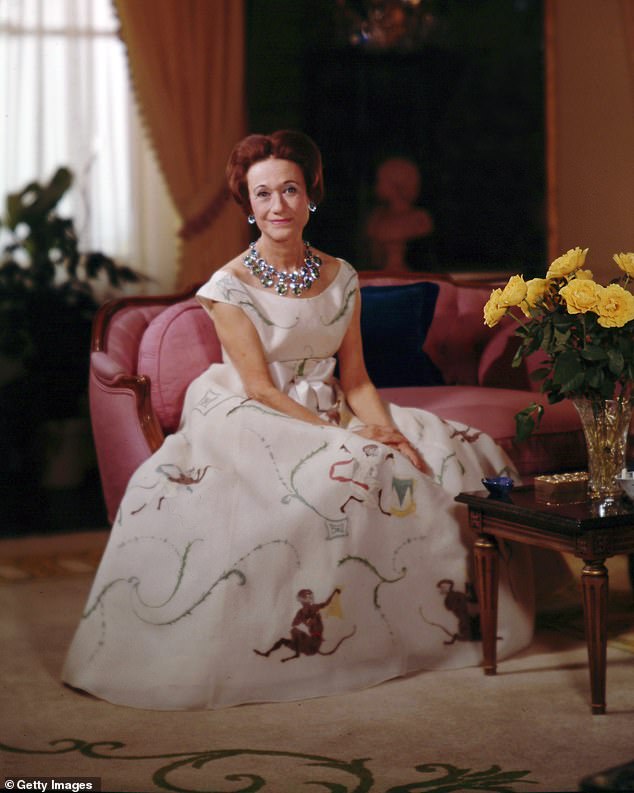
The Duchess of Windsor's jewellery collection was a messy, murky business, beset by rumours of theft, deceit and underhand dealing
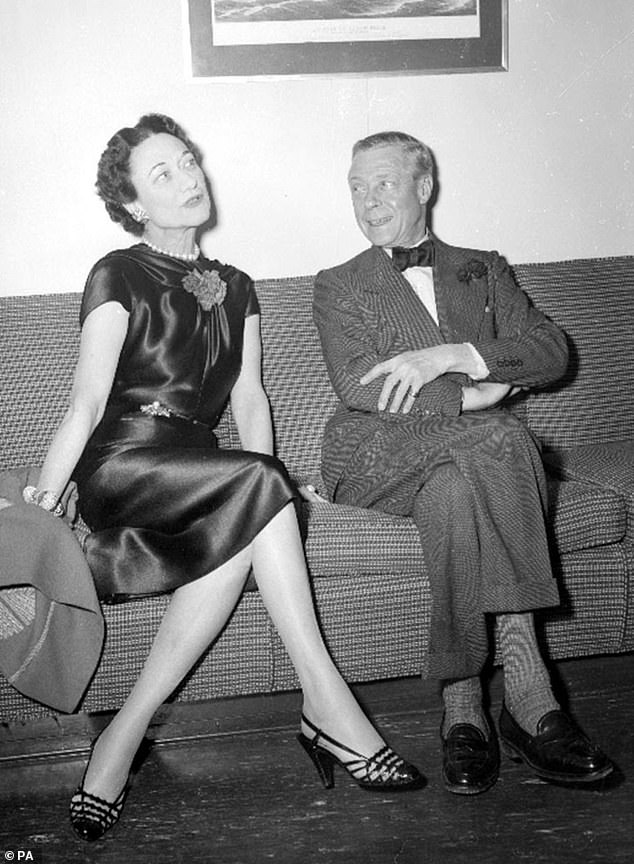
Both before their marriage and during their years of exile Edward showered Wallis with jewellery
The night her divorce was approved, Edward pulled a Cartier box from his dinner jacket, containing an engagement ring made from a huge Mughal emerald surrounded by diamonds.
Wedding gifts poured in, among them an inscribed gold box from Hitler.
But, for all their wealth and grandeur, the Windsors could be careless, as evidenced by an extraordinary crime that occurred in October 1946, ten years after the abdication.
The Duke and Duchess were on a brief visit to Britain, staying at Ednam Lodge, the Berkshire home of the Earl and Countess of Dudley. The Dudleys were decamping to Claridge's in London but were on hand to greet their guests. After dinner, Laura, Countess of Dudley, claimed that Wallis gave her a peek at the jewellery she had brought, housed in one of three identical trunks.
The trunk was so big that the Countess prevailed on Wallis to store it in the burglar-alarmed strong room where the family silver was kept. Wallis declined, laughing that she always kept her 'babies' under her maid's bed.
In her autobiography, Laughter From A Cloud, the Countess said the Duchess's jewel box had contained 'a great many uncut emeralds, which I believe belonged to Queen Alexandra'.
Scotland Yard's subsequent case file challenges this claim, but a precise inventory of the jewellery the Duchess brought with her has never been issued. A few days later, the Windsors travelled to London to dine with the Dudleys. At Ednam, at 5.30pm the evening bell rang, calling the 16 members of staff and the detective guarding the house to their evening meal, in the staff dining room.
Meanwhile, for some unfathomable (and to my mind extremely suspicious) reason, the Duchess had ordered her maid to move the trunk containing her jewellery boxes into the Duchess's bedroom, where it was rested in front of the fireplace.
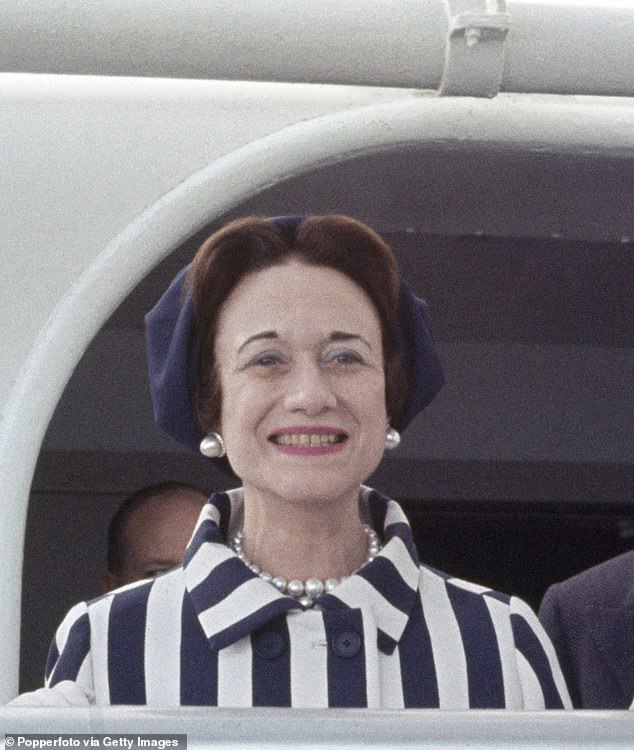
Mrs Simpson certainly did like her jewellery: once asked how she selected which pieces to wear, she replied brusquely: 'A fool would know that with tweeds or other daytime clothes one wears gold and with evening clothes one wears platinum'
The maid made her way to the staff dinner. When she returned to the Duchess's room at about 7pm, the trunk had been crudely prised open. Pieces of jewellery lay scattered about the room like confetti and some individual jewellery boxes were missing.
Several unmatched earrings were found by an eagle-eyed caddie, scattered around nearby Sunningdale golf course.
Anomalies (as noted by Scotland Yard and subsequent amateur sleuths) began piling up from the start of the investigation.
How was it that at the time of the burglary none of the servants saw or heard anything and none of the dogs barked?
The animals either knew the culprits or were not there. It turned out the head housemaid was out walking at least one (and perhaps two) of the dogs during the time the burglary was committed. Why wasn't the housemaid at the staff meal?
The thief or thieves knew where to go, entering via an upstairs open window a short walk from the Duchess's bedroom, where the locked (or was it, in fact?) jewellery trunk conveniently rested in front of the fire.
Two important items escaped the robbery. The Duchess was wearing a Cartier brooch made of rubies and sapphires forming the couple's intertwined initials 'W' and 'E', which the Duke had given her during the abdication crisis.
It had become an important symbol of their union and it was either lucky that she was wearing it or, as some with a jaundiced view maintained, it had been previously arranged to reside on her lapel and not in the trunk at Ednam Lodge.
Another brooch (brand new) had been delivered by Cartier that very morning, a jewelled bird of paradise with a large 65-carat sapphire forming the bird's breast and at least 350 small diamonds, created using gems in the Windsors' collection. Bizarrely, the Duke had hidden it under a vase for safekeeping before they went out.
Later the Duke said that he knew Cartier shouldn't have delivered the brooch (valued at the time at £20,000 – worth £700,000 today) when they did. And, later, the Windsors claimed it was also part of the stolen cache of jewellery.
Perhaps the biggest controversy concerns what exactly was stolen and their real versus their insured values. Most historians agree that around ten significant pieces were taken and never recovered. News reports at the time sensationally estimated the stolen jewellery was worth the nice round figure of £500,000 (more than £17million today).
The befuddled Duke, reacting to offensive rumours that he had instigated the entire robbery himself, told journalists the loss was worth only a paltry £20,000. This is a strange assertion, considering the new Cartier bird of paradise was worth £20,000 on its own.
The Duke's evasive behaviour and misleading comments did little to dispel the belief that the Windsors were somehow complicit in what was an 'inside job'.
The stolen jewels were officially insured for £400,000 (£14million today) and included a platinum and diamond bracelet with six large aquamarines, a gold ring set with a golden sapphire and a pair of diamond and sapphire earrings.
The insurers paid up promptly, agreeing that all the lost pieces should be replaced and the new collection insured for £800,000.
One authority who was convinced of the Windsors' duplicity and fraud was Leslie Field, author of The Queen's Jewels: The Personal Collection of Elizabeth II, written with the co-operation of the Royal Household.
She emphatically told the Duchess of Windsor's biographer Charles Higham: 'I believe the Duchess of Windsor defrauded the insurers by overstating the numbers and identifications of the jewels which had been disposed of. At least 30 items she named as being stolen turned up in the Sotheby's catalogue at Geneva in April 1987 and were sold for high prices.
'She clearly could never wear those jewels again after she and her husband had collected the insurance. They had from the beginning been in a strongbox in Paris and remained there.'
A year after the robbery, the Duke and Duchess provided Cartier with a large quantity of loose stones, including amethysts, emeralds, diamonds, sapphires and rubies, which were incorporated into new settings. Then, in the 1960s, they deposited at Cartier a further five 'cloudy deep green' emeralds and a large quantity of diamonds that were used to create a fabulous necklace.
Of course, after the insurance settlement, there was plenty of cash to buy new jewels and revamp old settings. This would have been a clever ploy to blur a perceived fraud based, as it was, on the perfectly natural and plausible desire of a fashionable lady to keep up to date with the latest trends.
Either way, both Edward and Wallis remained tight-lipped until their deaths; Edward in 1974 and Wallis in 1986. To many people's surprise, in her will Wallis had made France's Pasteur Institute, a leading medical research centre, the beneficiary of any money raised by the sale of her jewellery, perhaps as a gesture of thanks to the country which had given her and Edward a home.
When the time came for auction, on April 2, 1987, the first round, starting at 9pm Geneva time, lasted four hours. Lot 1, a ruby and sapphire beaded clip, sold like lightning to Alexander Acevedo, an American art dealer. Laurence Graff, the London jeweller, paid £823,000 for the Great Mughal emerald engagement ring.
Two bejewelled panthers, a brooch and a bracelet made by Cartier in the 1950s were bought by Andrew Lloyd Webber as a gift for his wife, opera star Sarah Brightman.
Elizabeth Taylor phoned from poolside at her Los Angeles home to buy a diamond clip in the shape of the plumes and crown of the Prince of Wales. It cost her £490,000 – she wanted it as a memento of the friendship with the Windsors she had shared with the man she married twice, Richard Burton.
The pre-sale estimates of £5.5million weren't merely smashed, they were obliterated. In all, the sale raked in more than £39million, which went, as Wallis decreed, to the Pasteur Institute.
These were astonishing sums of money, but what were these rich people really buying – originals, copies or royal booty? Only the Duchess knew the answer, and she had taken the secret to her grave.
Adapted from The King's Loot by Richard Wallace, published by History Press on July 25. Copyright © Richard Wallace 2024.To order a copy for £20.69 go to mailshop.co.uk/books or call 0203 176 2937. Offer valid until August 10, UK p&p is free on orders over £25.



























